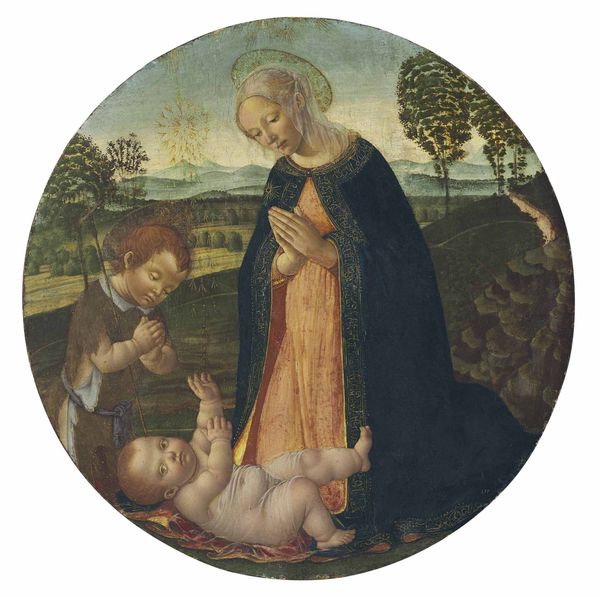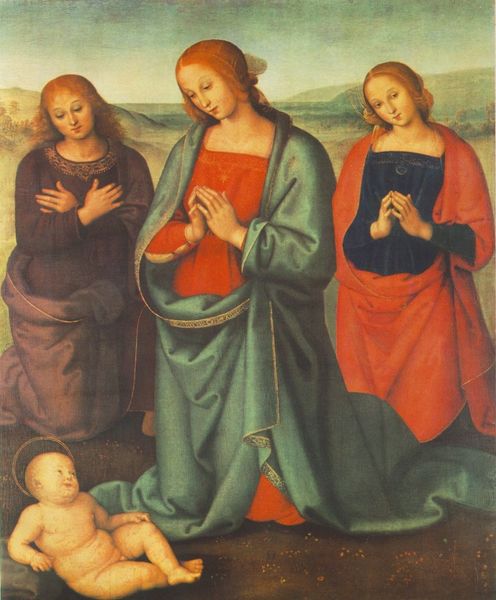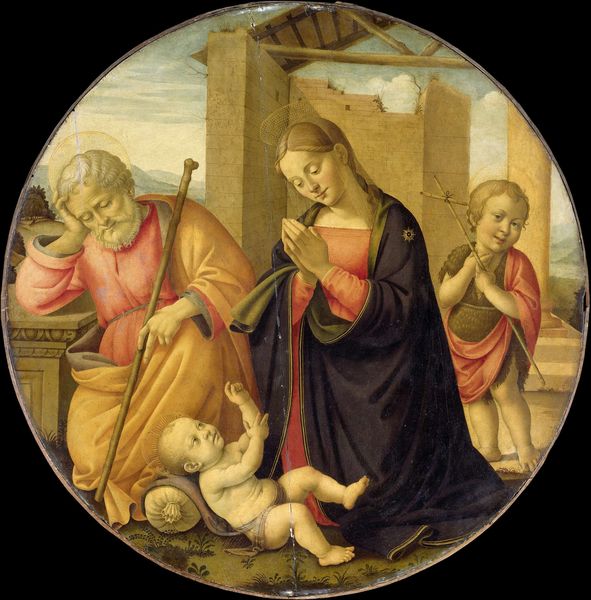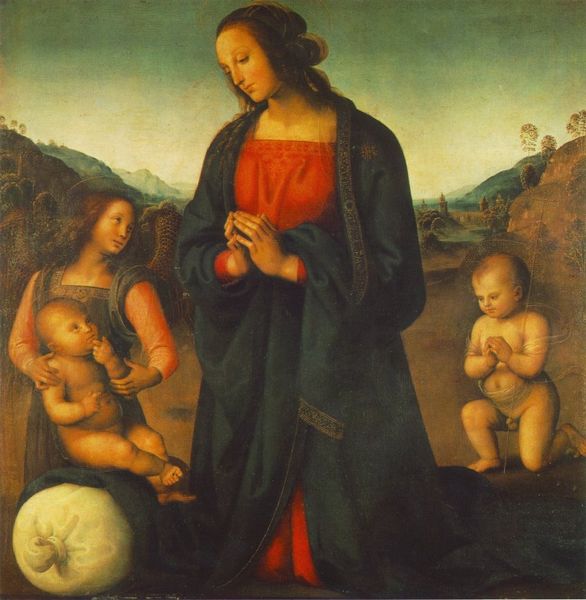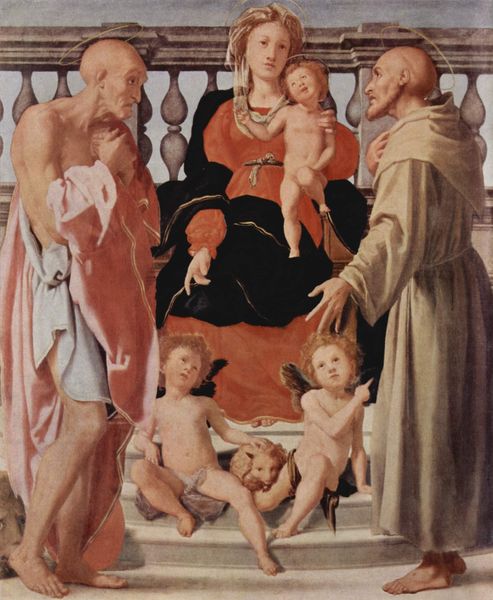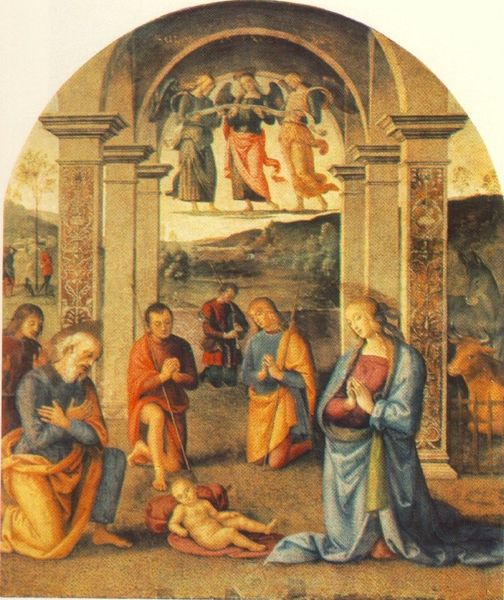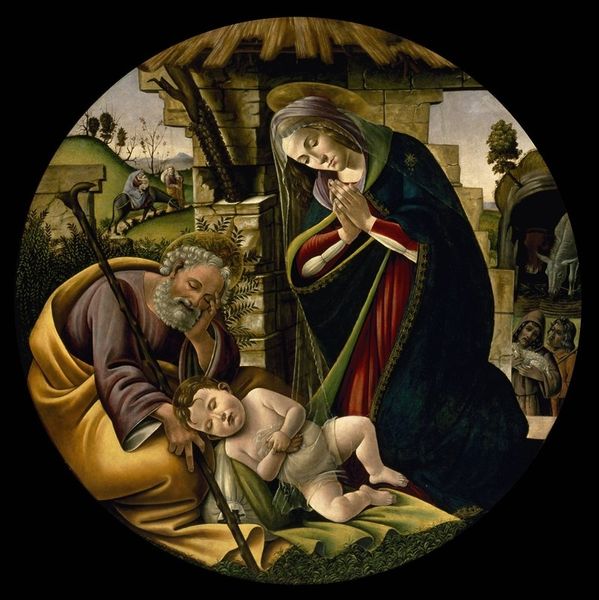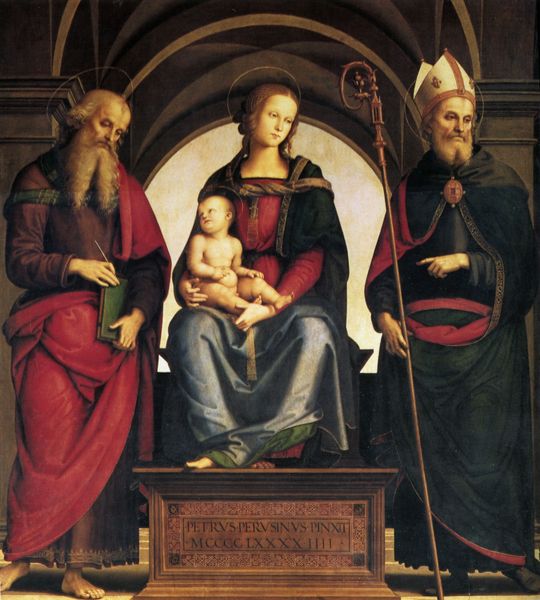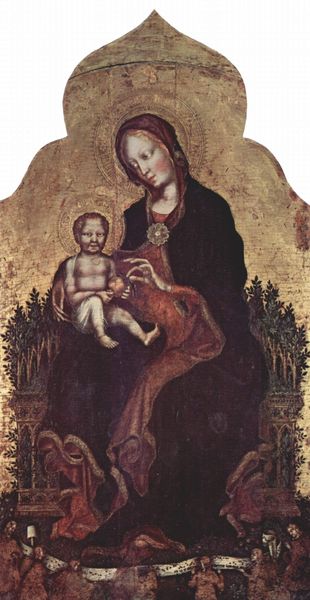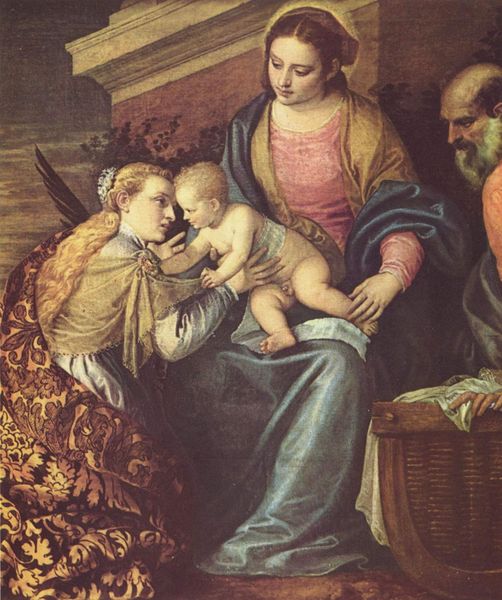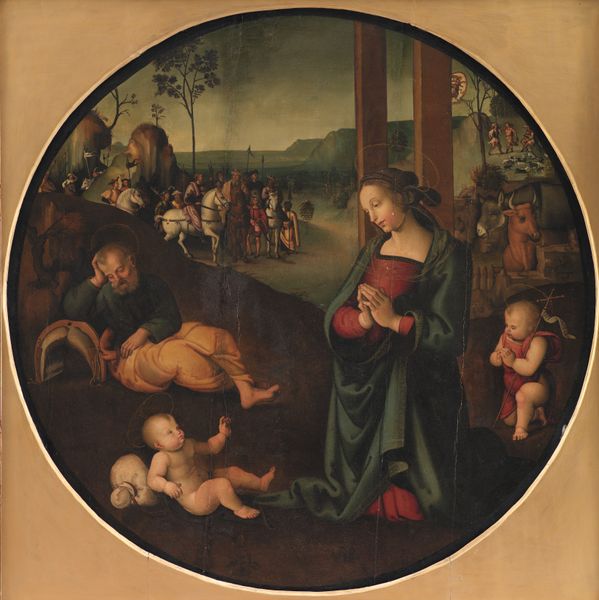
panel, painting, oil-paint
#
panel
#
narrative-art
#
painting
#
oil-paint
#
landscape
#
figuration
#
oil painting
#
christianity
#
history-painting
#
italian-renaissance
#
early-renaissance
Copyright: Public domain
Curator: This oil on panel, sometimes called "Birth of Christ, Tondo", is attributed to Pietro Perugino, a leading Renaissance artist. The round format, or tondo, was especially popular in Florence during the 15th century. Editor: My first impression is how incredibly still everything is. There’s a quiet reverence about the scene, even the cherubs overhead seem to be holding their breath. The colours, muted earth tones, add to that serene feeling. Curator: It’s a carefully constructed image meant for private devotion. Notice how the composition guides the viewer's eye: from the foreground where the Christ child lays, past the adoring figures, to the landscape background that opens to the spiritual realm. The symmetry underscores that visual journey toward the divine. Editor: The landscape! It’s quintessential Perugino – gentle rolling hills, feathery trees...it’s a visual code for harmony and divine order. Also, it provides a link with the antique roman idyllic landscape, synonymous of prosperity. It's worth observing how halos and hands are central. The figures point our reading of the scene. Even their colours and clothing! Do those variations signal the complex layers of Christian symbolic vocabulary? Curator: Certainly! This piece operates on many symbolic levels. The choice of attire signals socio-political status, linking powerful contemporary donors to religious narratives and eternal life, seeking symbolic redemption. It also shows how art at this time worked almost like public art. Editor: It’s interesting to see the tondo format used here. It suggests both a complete world, encompassing all creation within this single moment, and recalls classic examples that echo the shapes and proportions that were associated with harmony and ideal beauty. And there is the star. We should not forget the symbolism associated to the Christmas star which illuminates the new era to come. Curator: I agree. Considering its patronage, a piece like this also helped shape the devotional practices of wealthy families in Renaissance Italy, shaping their social identities, moral values and connection to the divine through aesthetic encounters. Editor: After our conversation, I can perceive this tableau is much more than merely picturesque. A testament of humanity seeking celestial endorsement through shapes, colors, devotion, wealth and symbolism.
Comments
No comments
Be the first to comment and join the conversation on the ultimate creative platform.
